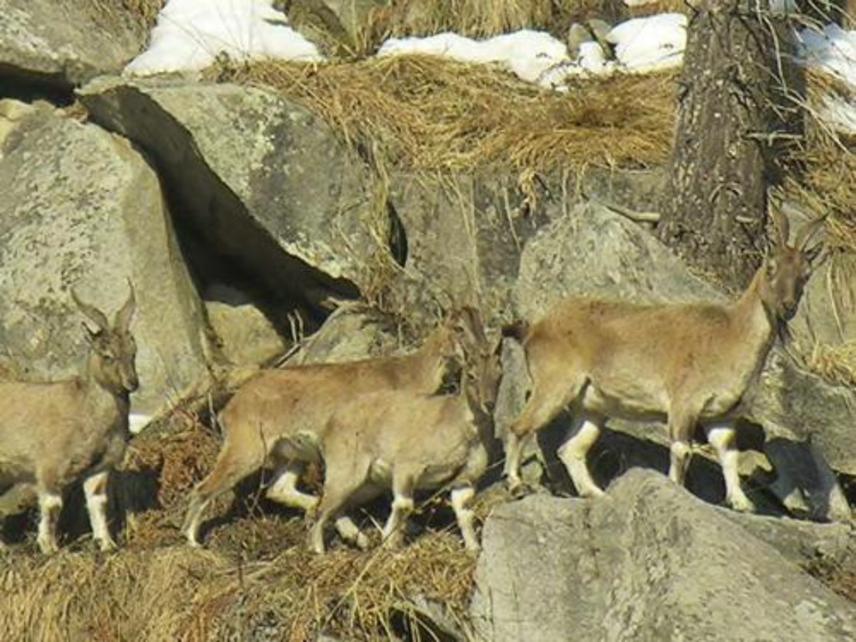Yash Veer Bhatnagar
Other projects
We have documented markhor ecology over three years in Kajinag range with the finding that the primary extant threat to it is from excessive livestock competition by migratory herders. This study is thus designed to understand markhor – livestock interactions and human resource use patterns so that socially sensitive conservation options can be suggested for managing this population, which at close to 300 individuals, is the last ‘viable’ population in India.

The flare horned markhor (Capra falconeri falconeri) is an ‘endangered’ species (IUCN Red List 2008). Owing to prolonged insurgency in the region, the Kashmir markhor was believed to be extinct in India, but our surveys showed that markhor still persist (Ranjitsinh et al. 2005 , Bhatnagar et al. 2009 ). These surveys generated the first distribution map of the species after 1947 and identified the Kajinag range as the largest stronghold for the species.
In the other area with markhor, the Hirpura sanctuary, we found that the species was tenuously surviving, and was threatened further due to a proposed highway (Hirpura sanctuary). Primary threats to markhor were identified as insurgency related activities and poaching. However, our follow-up studies in Kajinag under the first Rufford grant since 2006 demonstrated that livestock grazing by large migratory herds might be a serious current threat to the species (Bhatnagar et al. 2008 ). It is of utmost importance that the impact of grazing livestock on the markhor and its habitat be better understood, along with the extent of dependence of the local communities on markhor habitat.
The emphasis of the current phase of the study will thus be on understanding habitat and forage relations of markhor and livestock, the impact of livestock on markhor habitat, and the level of dependence of local communities on markhor habitat. Our results will help develop socially responsible conservation plans for the markhor, and possibly assist in identifying a mosaic of small and manageable ‘core zones’ or areas important for markhor that will need to be maintained free of human pressures or with greatly reduced levels of consumptive use.